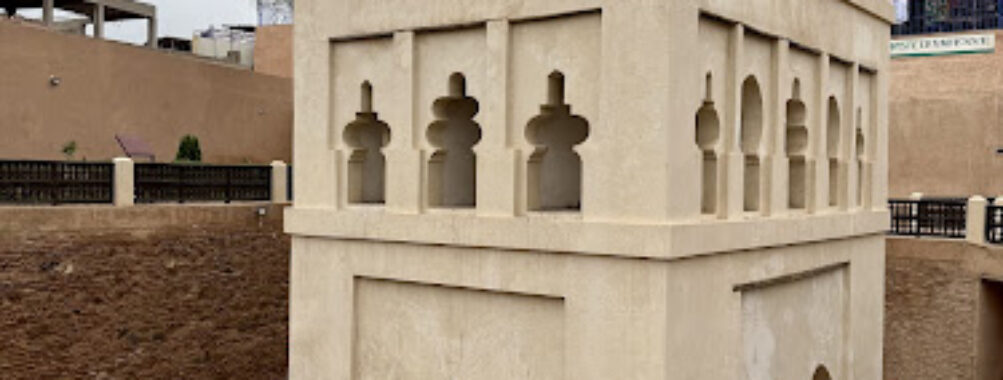
Almoravid Koubba
Table of Contents
Description
The Almoravid Koubba is one of those places in Marrakech that quietly pulls you in. It’s not flashy or sprawling like the palaces or the big gardens, but it carries a weight of history that you can feel the moment you step close. Built in the early 12th century, this domed structure is the last surviving piece of Almoravid architecture in the city, which makes it incredibly special. Think of it as a time capsule—something that has managed to outlast wars, dynasties, and centuries of change.
Walking up to it, you might be surprised by its modest size. It doesn’t scream grandeur, but that’s part of its charm. The detailing inside, though, tells another story. Intricate carvings, geometric designs, and inscriptions show just how much attention to artistry went into what might seem like a simple building. And honestly, that’s what makes it so fascinating—you’re standing in front of something that’s nearly a thousand years old, yet the craftsmanship still feels alive.
Now, to be fair, not everyone who visits is blown away. Some travelers expect something more dramatic. But if you’re the type who loves history, architecture, or just the idea of touching the past, you’ll probably find it deeply rewarding. I personally think of it as a quiet gem. It’s not going to overwhelm you, but it will leave you with a sense of respect for the people who built Marrakech into what it is today. And if you’re traveling with kids, it’s a good stop too—short, manageable, and a chance to spark curiosity without overwhelming them.
Key Features
- 12th-century construction, dating back to the Almoravid dynasty
- Last surviving example of Almoravid architecture in Marrakech
- Intricate interior carvings and Kufic inscriptions
- Unique dome design with decorative motifs influenced by Andalusian and North African styles
- Part of the city’s historic water system, once connected to nearby ablution facilities for worshippers
- Compact and easy to explore, making it a quick yet meaningful visit
Best Time to Visit
If you ask me, mornings are the sweet spot. The light is softer, the air is cooler, and the crowds haven’t fully arrived yet. Marrakech can be intense during midday, with the heat and the bustle, so slipping into the Koubba early gives you a little breathing room. Late afternoon works too, especially if you’re wandering the souks nearby and want a quiet pause before diving back into the chaos.
Season-wise, spring and autumn are the most comfortable. The weather is kinder, and you won’t feel like the sun is trying to cook you alive. Winter has its own charm—crisp air, fewer tourists—but bring a jacket, because Marrakech evenings can get chilly. Summer, well, it’s doable, but be prepared for heat that can make sightseeing feel like a marathon.
How to Get There
The Almoravid Koubba sits right in the heart of the old city, not far from Marrakech’s bustling souks. If you’re already exploring the medina, you can easily walk to it. The narrow streets can be a bit of a maze—I’ve gotten turned around more than once—but honestly, that’s part of the fun. You’ll stumble across spice stalls, tiny cafes, and artisans at work along the way.
If walking isn’t your thing, taxis can drop you near the medina entrances, but from there it’s usually a short walk. I’d recommend wearing comfortable shoes because the cobblestones and uneven paths are part of the package. And don’t be afraid to ask locals for directions; Moroccans are generally warm and willing to point you the right way, even if you don’t share a language.
Tips for Visiting
Here’s the thing: the Almoravid Koubba is not a place you rush through. It doesn’t take long to see, but give yourself a few extra minutes to really look at the details. The carvings, the arches, the way light filters inside—it’s easy to miss if you’re in a hurry.
A few tips from my own visits:
- Bring a guidebook or hire a guide: There aren’t tons of signs explaining the history, so having context makes a big difference. Otherwise, you risk just peeking in and leaving without really understanding what you saw.
- Pair it with nearby attractions: Since it’s close to the souks and other landmarks, plan to visit while you’re already in the area. It works well as part of a half-day itinerary.
- Be patient with expectations: It’s small, and some people find it underwhelming. But if you go in knowing it’s about history and detail rather than size, you’ll appreciate it more.
- Photography tip: The light inside can be tricky, so adjust your camera or phone settings. Early morning light usually works best.
- Respect the space: Even though it’s a tourist site, it’s still a historic religious structure. Dress modestly and keep your voice down—it just feels right.
And one last thought: don’t be afraid to let the visit be what it is. It’s not the showstopper of Marrakech, but it’s a piece of the puzzle that makes the city so layered and fascinating. Personally, I find that the smaller, quieter places often stick with me longer than the headline attractions. The Almoravid Koubba is one of those spots—it lingers in your memory like a whisper from the past.
Location
Places to Stay Near Almoravid Koubba
Find and Book a Tour
Explore More Travel Guides
No reviews found! Be the first to review!